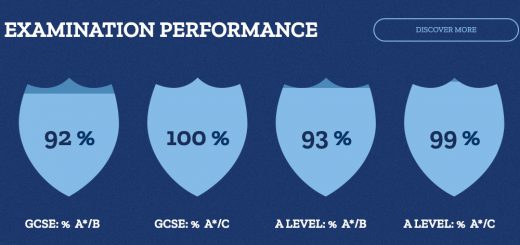Teach Secondary Article – Get Parents To Engage Less In Their Smartphones And More With Their Children’s Education
 We contributed recently to a Teach Secondary article which also featured interviews with a number of the schools we work with.
We contributed recently to a Teach Secondary article which also featured interviews with a number of the schools we work with.
We’ve highlighted with links below!
How schools are harnessing social media to create a better community for all, and what parts of the web they avoid
Ever hear that telltale click of a smartphone being hastily shut off as you meet with a parent?
It’s hard to blame anyone for showing more interest in their Facebook feed or the latest celebrity feud on Twitter than the – admittedly often predictable – topics to be discussed at parents’ evening. But what if you could enter the realm of these magical devices and deliver your school’s messages on a platform that can’t be ignored?
Open doors
When new head Chris Hildrew arrived at Somerset’s Churchill Academy, he saw a more interactive website as central to his strategy to build parental engagement.
“Crucial to the design was trying to break down the wall between school and home,” he explains. “In a secondary school you don’t get that ‘school gate’ thing you do in primary. A lot of parents 
 might feel we operate in a black box because they can’t see what goes on.”
might feel we operate in a black box because they can’t see what goes on.”
The school’s homepage gives star billing to Twitter, Facebook and Instagram buttons, which meet the eye instantly rather than being tucked away with the school’s contact details. “Using social media and an accessible website is one way of opening the doors so parents get a flavour of what goes on with their child.”
“My team has managed to convince me of the value of Twitter, Tumblr and YouTube,” says Helen Jones, head of Ysgol Maesteg in South Wales, “so I’ve endorsed those sites to share key messages. It was a conscious decision not to use Facebook; it has too many elements we can’t control so we didn’t feel it was a suitable platform to endorse the school.”
A growing audience for its social media feeds full of students’ news is vindications for the school’s efforts. “I see it as key to communicating effectively with our parents and wider school community,” concludes Helen.
See and be seen
“For current parents, mobile apps are an excellent source of key information: news items, diary dates, newsletters, photo galleries, etc.” comments Andy of web developers Greenhouse School Websites. “Schools can send ‘push’ notifications directly to parents’ phones; in many cases this is the single most important reason for having a school app.” Does that mean they’re becoming a ‘must have’? “I wouldn’t personally say mobile apps are required for every school, but I think that smartphone friendly websites are.”
Ah, yes, because do you know that parents even see your site? Unless it’s ‘responsive’ – designed on architecture accessible across a range of devices – visitors may be disappointed. “Over 50% of parents view websites on their mobile or tablet,” advises Ruth Sparkes, director of education marketing agency Empra. “If your site isn’t compatible it’s not only a problem for the viewer but also for search engines. Right now Google algorithms are bringing websites to the top that are responsive, and if Google’s not looking at you then nobody is.”
How’s Roy?
Not Orbison or Keane, we’re talking ROI (return on investment), the critical factor in persuading governors that a multi-functional site is worth the expenditure. “The fundamental metric for us is recruitment of pupils for September,” says Chris Hildrew of his school’s ROI calculations. “We’re full in Year 7 and expect to be full again next year, so that’s going well. But also we have all kinds of metrics running on our Facebook, Twitter and Instagram counts, and we use Google Analytics on the website to see which pages people are visiting, how often and how many clicks. We have a marketing manager in school who monitors and reports all that to the governors so we’re able to quantify the value of what we put up.”
Not everyone feels convincing evidence exists to justify taking that initial leap. The website for St Anselm’s Catholic School in Canterbury meets the eye with one perfectly nice shot of pupils, navigable menus of appropriate information and a discreet Twitter feed. “What we haven’t done – and don’t have the resources to do – is create an all singing, all dancing multimedia experience,” says head Michael Walters. “I think what parents want is a website that’s accurate and regularly updated, and beyond that I don’t think we should be bleeding money from public finances out to web developers.”
Cost effective
Aspiring to a private sector style site on a public sector budget is concern for others, too. “I would love to be able to sit down with someone for a week and get the website completely sorted, but schools don’t have the time or resources for that,” says Matt Chapman, deputy head at Manningtree High School in Essex. “Businesses of an equivalent size would have someone whose sole responsibility is running the website. In schools it will generally be someone’s job in addition to their main responsibilities, or it will fall between a number of people.”
It’s a challenge that each school meets with its own solution. At Ysgol Maesteg, the use of an in-house ICT technician to build the site saved the funds necessary to create an marketing officer post to maintain it.
At Woodside High School in North London data manager George Georgiou delegates web tasks to various departments, acting as admin to oversee any uploaded content before it goes live.
And at Rastick High School in West Yorkshire implementing a harder-working website has actually saved resources. “Like any school we struggle sometimes with our budget,” says communications manager Louise Benn. “We can’t always replace staff and our admin team has got smaller and smaller. So we needed to find new ways to work.”
The school’s solution is a user-friendly, responsive site that channels parents efficiently to specific destinations. A pop-up window reminds about an upcoming parents’ evening; outsize buttons direct even the fat-fingered phone-user straight to ParentMail App, the school’s calendar, Ofsted’s Parent View feedback site, a cache of statutory documents or the school’s prospectus.
“When we surveyed the parents of our new intake of Year 7s we thought they might want more information on the progress of their child. What they actually wanted was better contact with the school,” points out Louise. With 98% of families reporting use of one device or more it made sense to ditch postal mailouts forever. “If you think of a whole school letter-send to 1,500 pupils, just the man-hours stuffing envelopes makes it expensive. Now it’s on parents’ phones with a click of a button. It’s brilliant.”
TOOLBOX: WHAT YOU CAN DO IN…
2 minutes
Discover if your site is responsive at search.google.com/search-console/mobile-friendly
5 minutes
Make sure visiting speakers, partners in the local community, and institutions visited on school trips are tweeting about the great work going on in school.
20 minutes
Familiarise yourself with your Google Analytics dashboard. Discovering which posts generate most interest will help you shape future content.
This article originally appeared in Teach Secondary Magasine.













